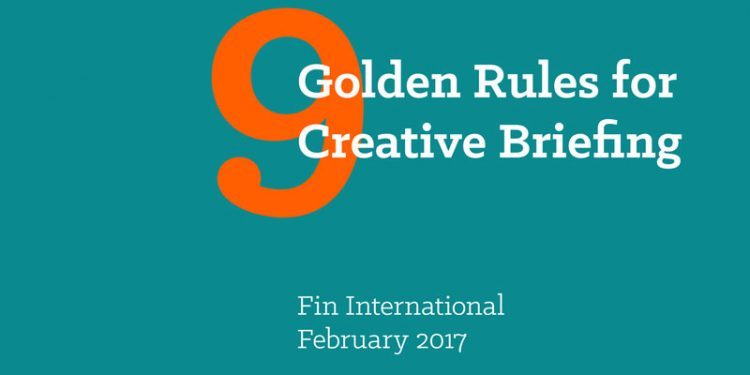This is something we talk about a lot. Late last year we sat around a table to discuss briefing. We talked around experiences and ideas that might improve the process of briefing projects. What could we all do better? Getting an idea out of your head and into someone else’s is very tricky. At least, doing it in any meaningful way is hard. So, what advice can we offer to make the process easier?
Initially, our aim was to put together the best briefing form we could, but quickly we realised that advice and collaboration was a better route than form-filling and box-ticking.
To this end we came up with our ‘9 Golden Rules for Creative Briefing’. We thought more about how we work with our clients every day and talked through the steps we thought would make the process easier for everyone.
Between us, we discussed our experiences, successes and horror stories. We put ourselves in our clients’ shoes, empathised and distilled the result into our nine pointers (we’re aware that “Rules” is a bit melodramatic).
We are sure that using these guidelines will have a positive impact on any of the work you do with your agency.
One size does not fit all
Some people are better at expressing things with the spoken word, others when things are written down. Naming funds is a world apart from storyboarding advertising. Every project is unique in one way or another, so it stands to reason the brief should be too.
Briefing forms are boring, they’re restrictive, but they are a great start
The first brief should be the beginning of a process not the end. On its own a form will be inadequate. We just need enough information to start the conversation.
You don’t need to do this on your own
Creative processes thrive on collaboration. We should work together to make sure we get the brief right from the start. Pick up the phone and call us in. We find that a face to face meeting usually leads to some inspiration or revelation.
Cultivate a partnership
A relationship with an agency should be collaborative, especially in financial services. The more we understand the specifics of your offer, the more effectively (and efficiently) we can help you. A longer-term investment of our time, on both sides, will pay off when we’re able to anticipate your needs better. That’s when you get the best out of us.
What are the project’s parameters?
What is key to delivering your project? Understanding of budgets and timelines is vital, but is there anything else we should know about? Knowing about other markets/products/formats/sizes up front can help to save time and money further down the line.
Let’s make sure we’re speaking the same language
Does anyone like jargon? Design and financial services are rife with it and none of us want to baffle or patronise the other party. It might seem obvious but checking that we’re working from a common vocabulary is a useful and simple step to take. We just want to make sure we’re all understood.
What do you want to achieve?
The best brief is the one that gives us a problem and the longer-term goal. If we can see the big picture we can identify what you really need. We are aware that you may just need to get this job off your desk so you can get on with something more important. We can help with that too.
Let the creatives do the creating
We want your ideas, you will have an insight that we could never have. However, our role is to provide the creative brains and it’s their job to turn your needs, ideas and inspirations into something special. Work with us on this and our ’creative brains’ can help you shine.
Let us know what will happen at your end
Compliance aside, what hoops will you need to jump through before this project goes live? Is there an internal sign off before you can brief us at all? Are you the end client or is there someone ‘upstairs’.

